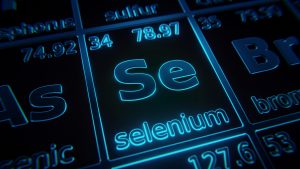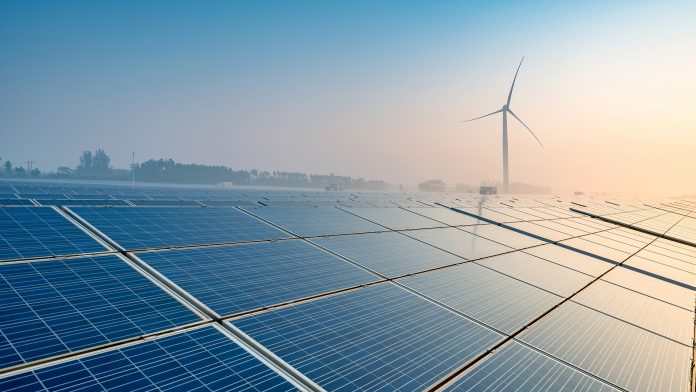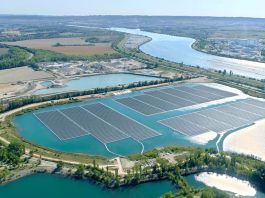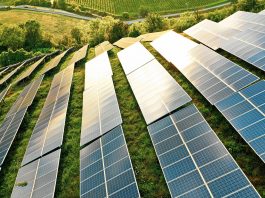Researchers have found a way to improve the efficiency of low-cost solar cells, aiding the global transition to clean energy.
As the number of countries pledging to achieve net zero emissions over the coming decades continues to increase, the need for clean energy is critical. Energy-related carbon dioxide emissions reached an all-time high in 2021, emphasising the importance of sourcing an alternative to fossil fuels. One of the most cost-effective ways to generate electricity is through solar energy. According to Chao Chen of the Wuhan National Laboratory for Optoelectronics (WNLO) and School of Optical Electronic Information at Huazhong University of Science and Technology, China, solar cells that have been developed with selenium (Se), in particular, are a desirable option because the mineral is low-cost, stable, and non-toxic.
However, the efficiency of selenium is limited by its low melting point and wide bandgap, the range where no electronic states can exist. Now, Chen and a team of researchers have overcome these weaknesses by alloying selenium with tellurium (Te), ensuring that selenium solar cells are an attractive option for clean energy.
The results of the study were published in Frontiers of Optoelectronics.
Alloying selenium with tellurium
According to the researchers, the optimal bandgap for single-junction solar cells is 1-1.5 eV, but selenium’s bandgap is approximately 1.8 eV, making it wider than ideal for use in solar cells. By pairing selenium with tellurium, the researchers tuned the solar cells to the Shockley-Queisser limit, the maximum theoretical efficiency of single-junction solar cells.
Chen, Associate Professor at the School of Optical Electronic Information at Huazhong University of Science and Technology and corresponding author of the study, stated: “Alloying [selenium] with tellurium, which has the same crystal structure and [has a] narrow bandgap, can tune the bandgap and increase the melting point, thus expanding the absorption spectrum and improving the quality of [the selenium solar cell] films.
“Therefore, Se1-xTex alloy is expected to achieve the improvement of solar cell efficiency.”

Utilising zinc oxide
Zinc oxide (ZnO) was also used by the researchers as an electron transport layer in the fabrication of the solar cells due to the proper band alignment and mild reaction at the interface of the zinc oxide and the selenium/tellurium.
“Zinc oxide was selected as the electron transport layer, which can slightly react with Se to enhance its interfacial adhesion and to reduce dangling bonds and thus reduce interfacial defects,” Chen said.
Chen emphasised the importance of using zinc oxide, which was one of the new parts of this research, along with the analysis conducted on particular aspects of the selenium tellurium solar cells.
“The recombination mechanism and defect type of Se1-xTex alloy solar cell were analysed by characterisations of light intensity dependent current-voltage, capacitance-voltage, and temperature dependent admittance, which will help to further optimise the Se1-xTex alloy system,” Chen said.
After developing the new selenium tellurium solar cells with zinc oxide electron transport layers, the researchers found that the material kept the positive traits of being very photoconductive and having a large absorption coefficient, while improving efficiency.
“The efficiency of ZnO/Se0.7Te0.3 solar cells has more than doubled after nine months in the air,” Chen said. “ZnO/Se0.7Te0.3 [is proven as] a superior junction with energy band matching and tight adhesion, and the efficiency of 1.85% has been achieved preliminarily.”
The next steps
Now, the researchers are aiming to improve on the fabrication of their solar cells and then to scale the technology.
“The next step will be to prepare high-quality Se1-xTex alloy films — eliminate holes and vacancy defects and so on — and optimise device structure — adding the hole transport layer and so on — so as to further improve the efficiency of Se1-xTex alloy solar cells and achieve mass production.”
This work was funded by the National Natural Science Foundation of China, the Natural Science Foundation of Hubei Province, the Fundamental Research Funds for the Central Universities, the National Key R&D Program of China, and the China Postdoctoral Science Foundation.









